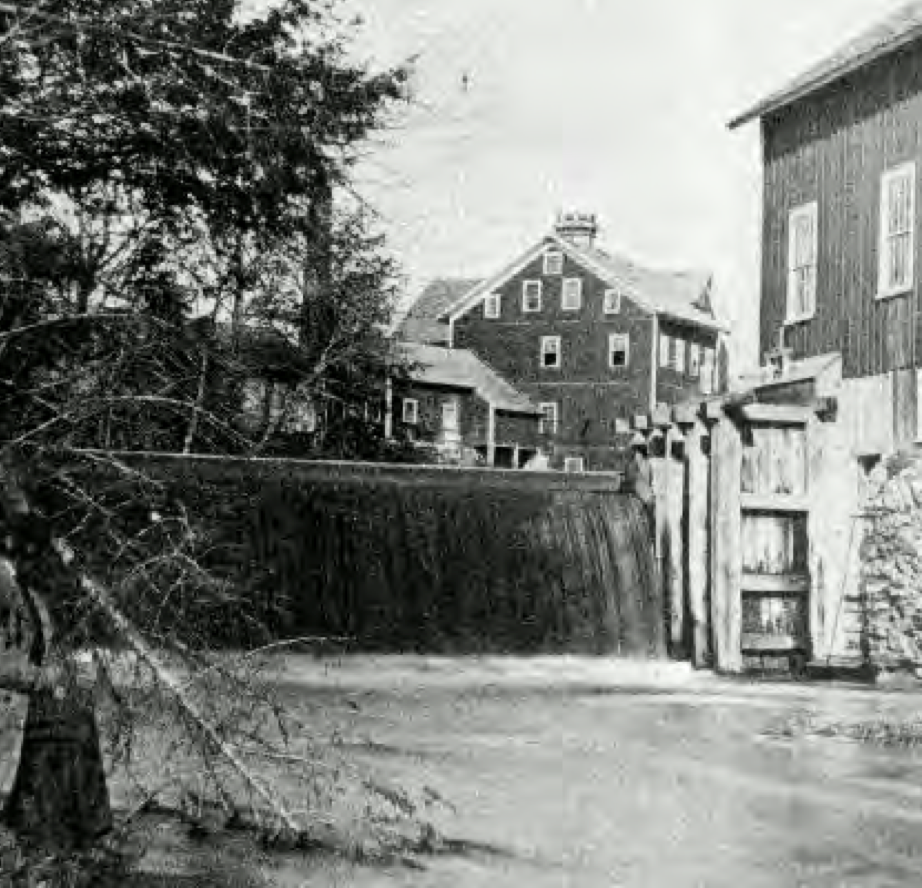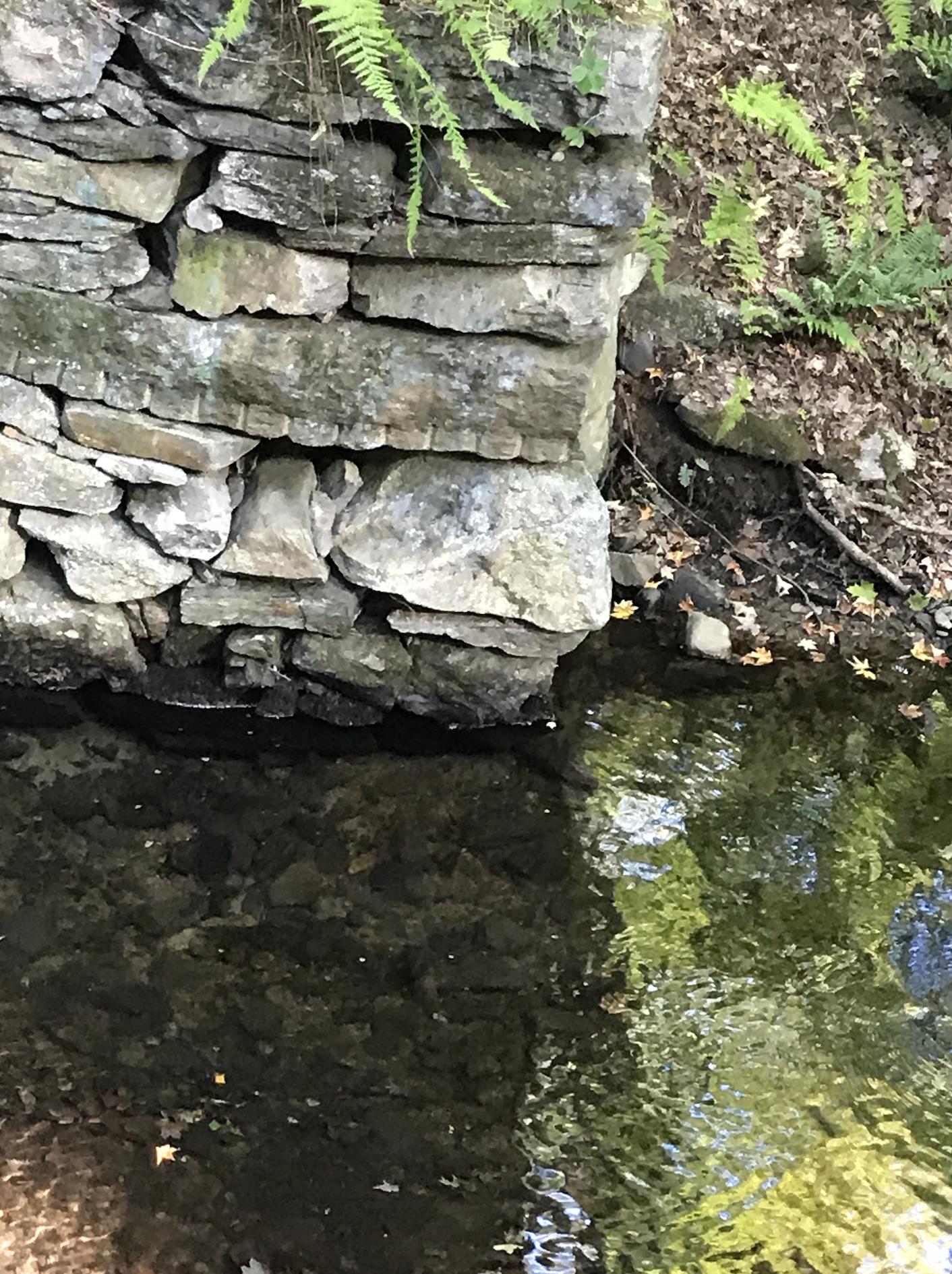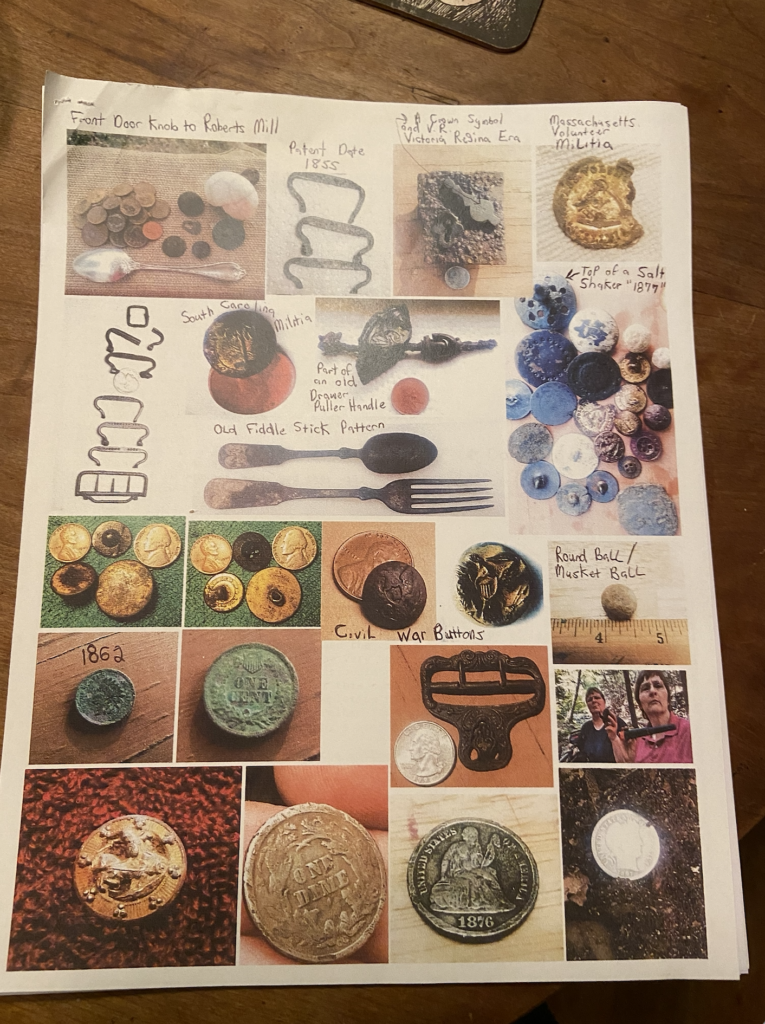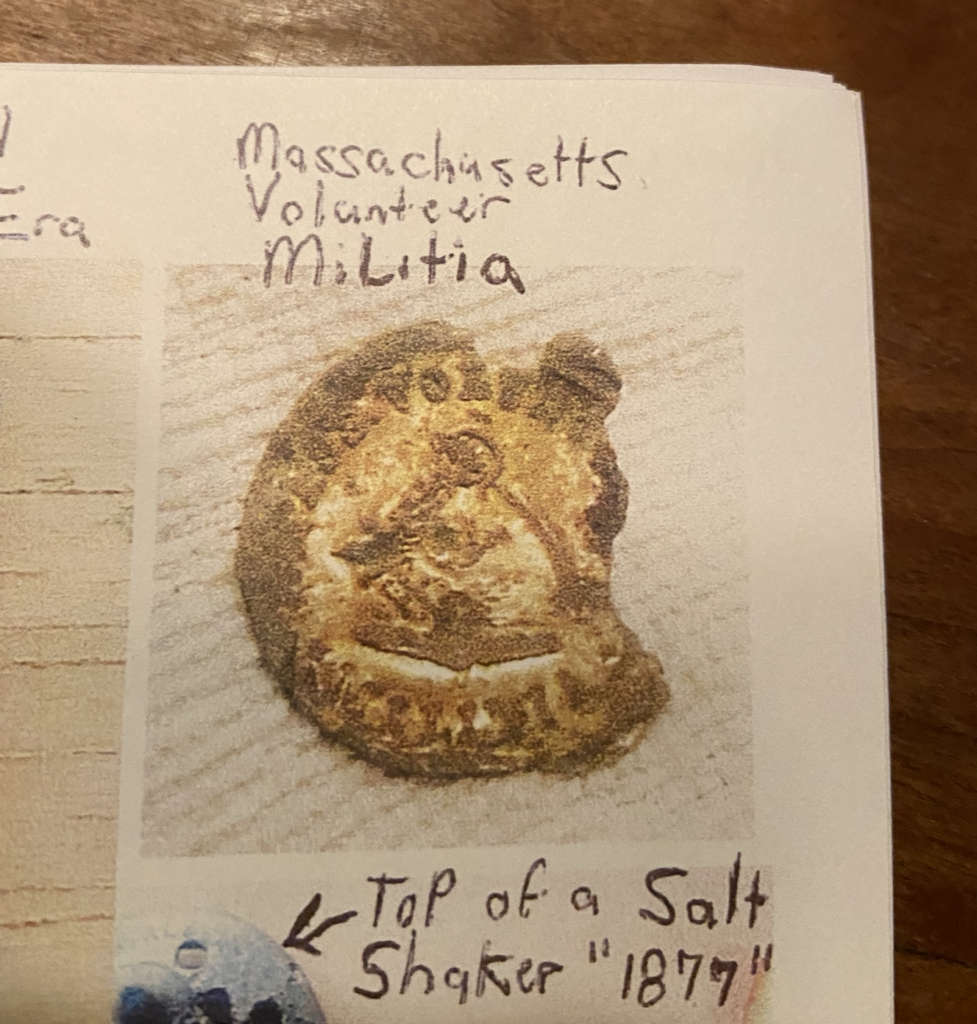New History Trail To Be Built Along The Mill River

The Red mill, on the mill river in Cushman from the Early Industrial period (1830-1870). Photo: amherstma.gov
The Dirty Hands District — that was the colloquial name for North Amherst in the 19th and early 20th century. In comparison with the downtown neighborhoods of elite academics, writers, and business leaders, with fine homes around Amherst College and the town center, North Amherst was the site of dozens of mills and factories along the Mill River and the homes of recent immigrants who worked in the mills. In 1776 there were already a dozen small mills producing pencils, desks, lumber, and doors, for example.
Between what is now the Mill River Recreation Park and Cushman Common, there was a string of mills, factories, and a sawmill, and industrious Amherst residents produced all sorts of products, hydro-powered by the river. The Puffers Pond area was called “Factory Hollow.” Summer Street was dubbed “Little Lithuania,” acknowledging the many Lithuanian immigrants who lived there. Ninety-nine-year-old Pete Kazlauskas, still living in his childhood home on Summer Street, grew up speaking Lithuanian at home and worked at the sawmill as a high school student. While most of the sites are now completely deteriorated, there are a few remaining cellar holes, dams, and canals that reflect the pluck and hard work of North Amherst families.
The District One Neighborhood Association (DONA) plans to create an interpretive history trail along the river, from the Mill River Park to Cushman Common, telling the story of the various activities along the River, with signage and QR codes for access to a detailed web site with information about the people’s lives who carried out this work and what they produced. Fortunately, all of the sites are on Town land along the existing Mill River conservation trail, one of the most popular conservation trails in town. No new trails will be carved through the conservation land.
In its most recent round of funding, the Amherst Community Preservation Act Committee (CPA) awarded $12,900 to implement the preliminary research of four specific sites as well as archival research on the whole area. The grant will be managed by the Conservation Department, working with DONA. The CPA funding will enable the hiring a professional archaeologist to study four initial sites, including the dam and canal along the Mill River Park, two mills owned by the Roberts family east of Puffers Pond, and the Cushman Clam Club, or “The Clambake,” a men’s club that featured clams brought twice a week to Cushman from Boston. The midden of clam shells is still visible from the trail for the hiker who knows where to look. One of the goals of this preliminary, first-stage research is to map out the entire project with a timeline, budget, and a plan for community involvement.

This project will use a Community Archaeology approach to engage the community in learning about the local Amherst history and people. Community Archaeology is archeology by the people and for the people, where residents learn about their past by exploring archeological sites that contain history. Typically, Community Archeology is used with indigenous communities and other displaced people to learn about, uncover, and reclaim their history. Projects vary but there are two general aspects found in all community archeology projects: 1. Community Archeology involves communities in planning and carrying out projects of interest to them, and 2. Community Archeologists try to make an altruistic difference, that is, they seek to engage with and contribute in a positive way to communities, not just undertake research for its own sake. Archeological research is expected to commence this summer.


And so, a central goal of the Mill River project is to create a sense of stewardship in the community, training and encouraging people to take care of and protect their archaeological heritage, to see the sites as something to protect and learn from, rather than a place to find artifacts. Amateur treasure hunters frequently search the sites for historic treasures, which they pocket. (See photo of objects found along the River, artifacts the project hopes will find a permanent home in the Amherst Historical Society.) A History Trail Committee of neighbors and allies is being formed to work with the archaeologist to provide support and to learn about what we are finding. The committee will play a central role in translating this initial research into a long-term plan.
Another goal of the project is to identify threats to the resources and suggest strategies for their protection. One of the greatest strengths of community archaeology is protection of historic sites. The best protection isn’t the police or the government; it’s knowledgeable neighbors and the broader community who frequent the trails, notice, and care.
DONA intends to tell the story of the sites and the river with audio recordings, text, and ASL interpretation, accessible by means of QR codes so hikers will have access to the information through their cell phones. DONA hopes to engage high school students in creating the web site and recording stories of the North Amherst residents who built and operated these mills. The final product will be a narrated historical trail that enables people in Amherst to learn about, appreciate, and protect Amherst’s entrepreneurial 19thcentury history as they walk along the conservation trails of North Amherst.

This is exciting! I look forward to walking the interpretive trail when it’s ready.
And, it fits right in the beginning of the up-dating of our Town’s Historic Preservation Plan with the goals of alerting our residents to the public benefits of historic preservation, what is worth preserving of our built and un-built environment and why–or why not!
This will be a great way to preserve the kind of local knowledge that my ancestors in N Amherst lived and knew.
My father, Stephen Puffer, used to embark fellow Applewood residents in his car and take them on a tour of historic sites of his lifetime ( Pond, N Amherst ‘hood, mills) They were fascinated and had never heard those stories.